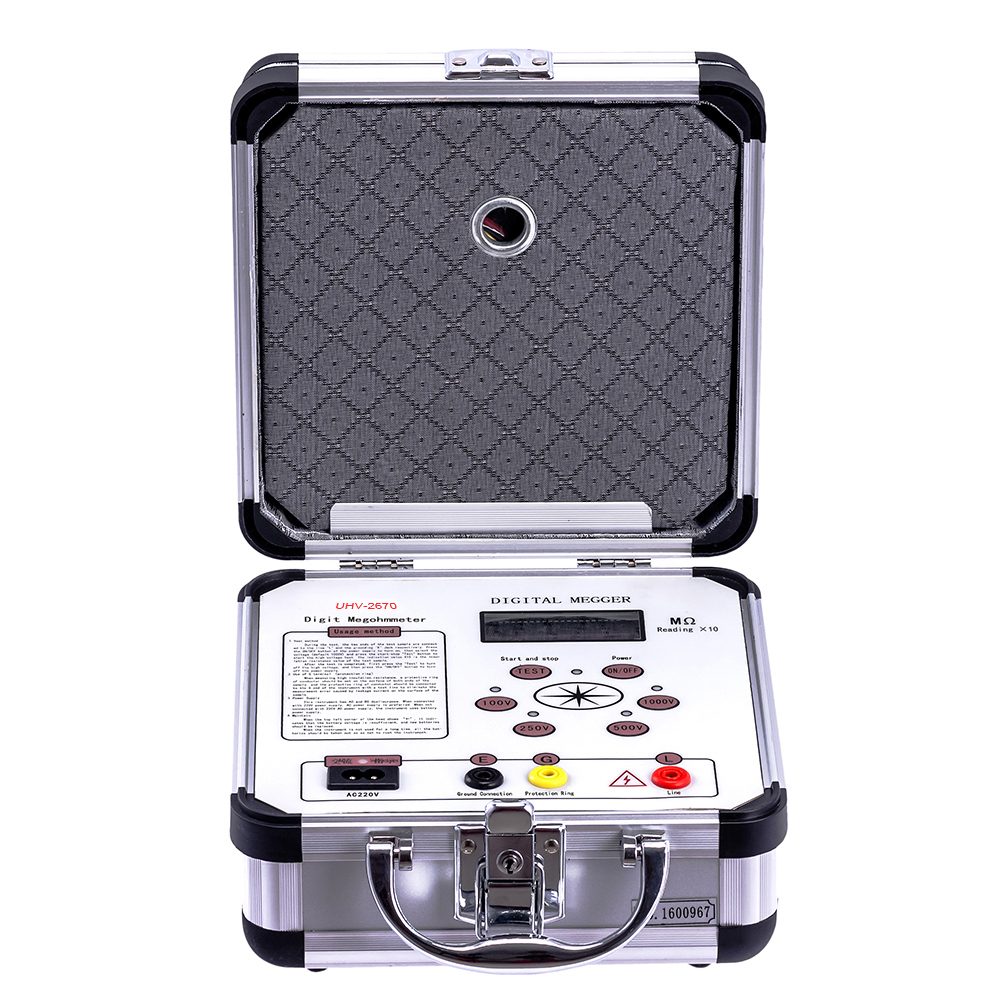The megohmmeter under UHV power can help many power workers conduct various power tests more conveniently.

Is a megohmmeter harmful to the human body?
A megohmmeter, also known as an insulation resistance tester The main function of a megohmmeter is to measure resistors with higher resistance values. Generally used to measure insulation resistance, such as the insulation performance of electrical equipment such as motors, cables, materials, etc. A megohmmeter is an insulation resistance tester designed specifically for measuring high resistance. Measuring larger resistors requires a higher input voltage. The larger the measured resistance value, the higher the required voltage. According to U=IR, when the current is constant, the higher the measured insulation resistance, the higher the required voltage. A megohmmeter can generate DC negative high voltage through circuit boosting. Usually, a megohmmeter can output 250V, 500V, 1000V, 2500V, 5000V (5kV), 10000V (10kV), 15000V (10kV), 20000V (20kV), etc. It is divided into multiple specifications based on output voltage and current. The principle of measurement is actually to divide the resistance in the instrument by the measured resistance, and detect the resistance value by measuring the voltage.
Is the high voltage output from a megohmmeter harmful to the human body?
In order to measure high resistance, a megohmmeter needs to output a higher voltage. As mentioned earlier, it does not require high current. The maximum output current of the megohmmeter produced by Wuhan Zhuoya Power Automation Co., Ltd. is only below 10mA. Therefore, although the output voltage of a megohmmeter is high, the output current is small, and the level of danger to the human body is not enough to cause death. However, safety must be taken into account when using it, especially when sweating heavily. Touching the measuring electrode can still cause a stinging sensation.
What is the safe current that the human body can withstand?
According to national regulations, the safe current that the human body can withstand is generally 30mA (milliampere), and in special circumstances it is 15mA (milliampere). The maximum current (short-circuit current) that a megohmmeter can output is only 0 to a few milliamps, completely within the human body. Within the acceptable safety range, there is no need to worry about being electrocuted through a megohmmeter.



















